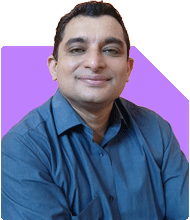Hello sir , I am 40 years old , I have below investment. No EMI No Loan. FD - 60 lacs. Mediclaim - 10 lacs ( 20K per year) NPS - 50K Per year ( Since last 5 years) PPF - 150K Per Year ( Since Last 5 years) I am investing in below mutual funds through SIP. ( 32K Total) - Since last 3 Years ICICI balanced Advantage 2K HDFC Balanced Advantage 3K Tata Midcap and Largecap 3K Nippon India Small Cap 2K Motilal Midcap 2K ICICI Prudential Commodities 5K Quant Small Cap 5K HDFC Top 100 5K Parag Parikh Flexi 5K Is it good funds for long terms ( Horizon of 8/10 years) ? My income is arround 1.80 lac monthly , no home loan and emi. Shall I increase my SIP and my concern is 60 lacs is in FD ..Please suggest.
Ans: Assessment of Current Investments
Your financial discipline is impressive. You’ve built a diversified investment portfolio with no loans or EMIs, which is a great advantage. Your investments in fixed deposits (FDs), PPF, NPS, and mutual funds through SIPs demonstrate a thoughtful approach to wealth building.
However, it’s important to review the effectiveness of these investments, especially for long-term goals. Let’s break down the strengths and areas for improvement.
Fixed Deposit (FD) - Rs 60 Lakhs
FDs are safe, but their returns can be lower than inflation over the long term. This reduces the purchasing power of your money. Given the low interest rates compared to inflation, it might not be ideal to keep such a large portion in FDs for a long time.
Consider shifting part of this amount to higher-return investments. A mix of debt and equity mutual funds can offer better growth with moderate risk. This will ensure that your corpus grows and does not lose value.
Mediclaim - Rs 10 Lakhs
Your health insurance coverage is essential, but Rs 10 lakhs might be insufficient in today's medical inflation. Since you are 40 years old, increasing your coverage to around Rs 20-25 lakhs would be wise. You can also look into super top-up policies for additional coverage at lower premiums.
Keep your premium manageable while ensuring you have enough coverage for any emergency.
NPS - Rs 50K Per Year
The National Pension System (NPS) is a good option for retirement savings. It offers tax benefits and helps create a retirement corpus. However, keep in mind that NPS has limited liquidity and locks in the money till retirement.
Continue with your current contribution, but it’s important to also have other flexible investments for retirement, which can be accessed before the NPS maturity if needed.
PPF - Rs 1.5 Lakhs Per Year
Your consistent contribution to PPF is excellent. PPF offers tax-free returns and acts as a solid long-term debt instrument. However, it has a 15-year lock-in period, and the returns are limited, which might not be sufficient to beat inflation in the long run.
Continue investing in PPF, but consider balancing it with equity-based investments for better overall growth.
SIPs in Mutual Funds
Your SIP investments show good diversification, with exposure to large-cap, mid-cap, small-cap, and flexi-cap funds. However, let's assess whether the fund selection aligns with your long-term goals.
Balanced Advantage Funds (BAFs)
BAFs are designed to manage market volatility by dynamically adjusting between equity and debt. Your allocation in these funds is good for managing risk, but the return potential might be lower compared to pure equity funds over the long term.
You may want to review your allocation here and consider increasing exposure to pure equity funds for better growth.
Midcap and Smallcap Funds
You have a healthy exposure to midcap and smallcap funds. These funds have the potential for high growth but come with higher volatility. Given your 8-10 year horizon, this allocation is suitable, as the long-term potential of mid and small-cap companies can help you achieve substantial gains.
Ensure you monitor these funds regularly, as they require careful attention to market cycles. If you can handle some risk, this allocation can continue to serve you well.
Commodities Fund
Your exposure to a commodities fund is unique. While commodities can provide diversification, they are often volatile and may not deliver consistent returns in the long term. Consider reducing exposure to this fund and reallocating it to equity or hybrid funds with better long-term growth potential.
Top 100 Large Cap Fund
Large-cap funds are stable and provide steady returns, making them a good choice for a conservative portion of your portfolio. Your investment here is well-placed for long-term wealth creation, as large-cap companies are usually more stable and less volatile.
Flexi Cap Fund
Your investment in a flexi-cap fund is an excellent choice. These funds offer flexibility to invest across market capitalizations, which helps in capturing opportunities across different market segments. Flexi-cap funds can provide good long-term growth due to their dynamic nature.
Recommendations for Future SIPs
Increase Your SIP Gradually
Since your income is Rs 1.8 lakh per month, and you’re already investing Rs 32,000 in SIPs, you have room to increase your SIP contributions. Increasing your SIPs by Rs 10,000 per month could help you build a stronger corpus over time.
You could distribute the increased SIP amount among equity funds, focusing on large-cap or flexi-cap funds for better risk-adjusted returns.
Shift FD Amount Gradually
You can consider gradually reducing your Rs 60 lakh FD and allocating part of it into mutual funds. A combination of debt and equity funds would provide better returns while managing risk.
For example, you could shift Rs 20 lakh from FD into a combination of balanced hybrid funds and debt funds. This would offer a balance between safety and growth.
Health Insurance Enhancement
Increase your health insurance coverage to at least Rs 20-25 lakhs. Super top-up plans can be a cost-effective way to enhance your coverage without significantly increasing premiums.
Diversification Across Asset Classes
While your portfolio is diversified, it can benefit from more balanced exposure between debt and equity. Consider introducing hybrid funds or balanced advantage funds to provide a cushion against market volatility.
Reevaluate Commodities Fund
Commodities tend to be more volatile and may not perform as well over the long term compared to equity funds. You might want to shift this allocation to equity-focused funds for better growth prospects.
Long-Term Strategy and Final Insights
You are already on the right path with your investments. The key is to refine your portfolio for better long-term growth and inflation-beating returns. Some key takeaways:
FD Allocation: Gradually reduce your Rs 60 lakh FD holding. Allocate a portion to debt mutual funds for better returns and liquidity.
Health Insurance: Increase your health coverage to Rs 20-25 lakhs.
Increase SIPs: Consider increasing your SIP contribution from Rs 32,000 to Rs 40,000, focusing more on large-cap and flexi-cap funds.
NPS: Continue contributing to NPS, but balance your retirement planning with more liquid investments.
Balanced Advantage Funds: While these provide stability, the growth potential is limited. Consider reallocating part of this investment into equity funds for long-term growth.
Commodities Fund: Reevaluate this fund as commodities can be highly volatile. Shifting this to equity-focused funds may give better returns over 8-10 years.
Flexi-Cap and Midcap: These funds are ideal for long-term wealth creation, so maintaining and slightly increasing your allocation can provide growth.
Regular Reviews: Monitor your portfolio regularly and make adjustments based on performance and market conditions.
Finally, your financial foundation is strong. With a few adjustments, you can further strengthen your long-term wealth creation strategy. Stay focused on your goals, and consider increasing your SIPs as your income grows. Your current path is promising, and with these improvements, you will be well-positioned to meet your financial goals.
Best Regards,
K. Ramalingam, MBA, CFP,
Chief Financial Planner,
www.holisticinvestment.in



























